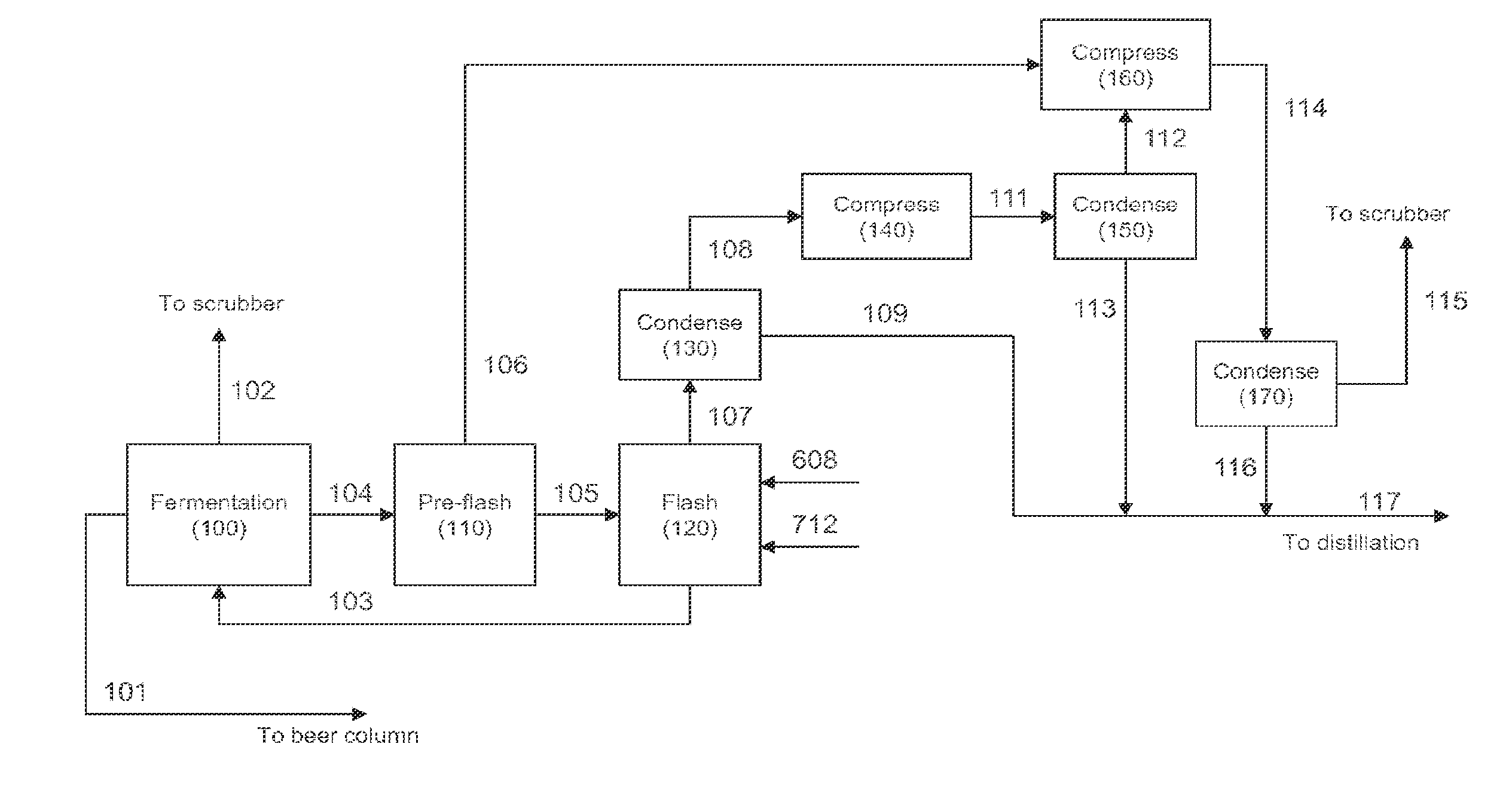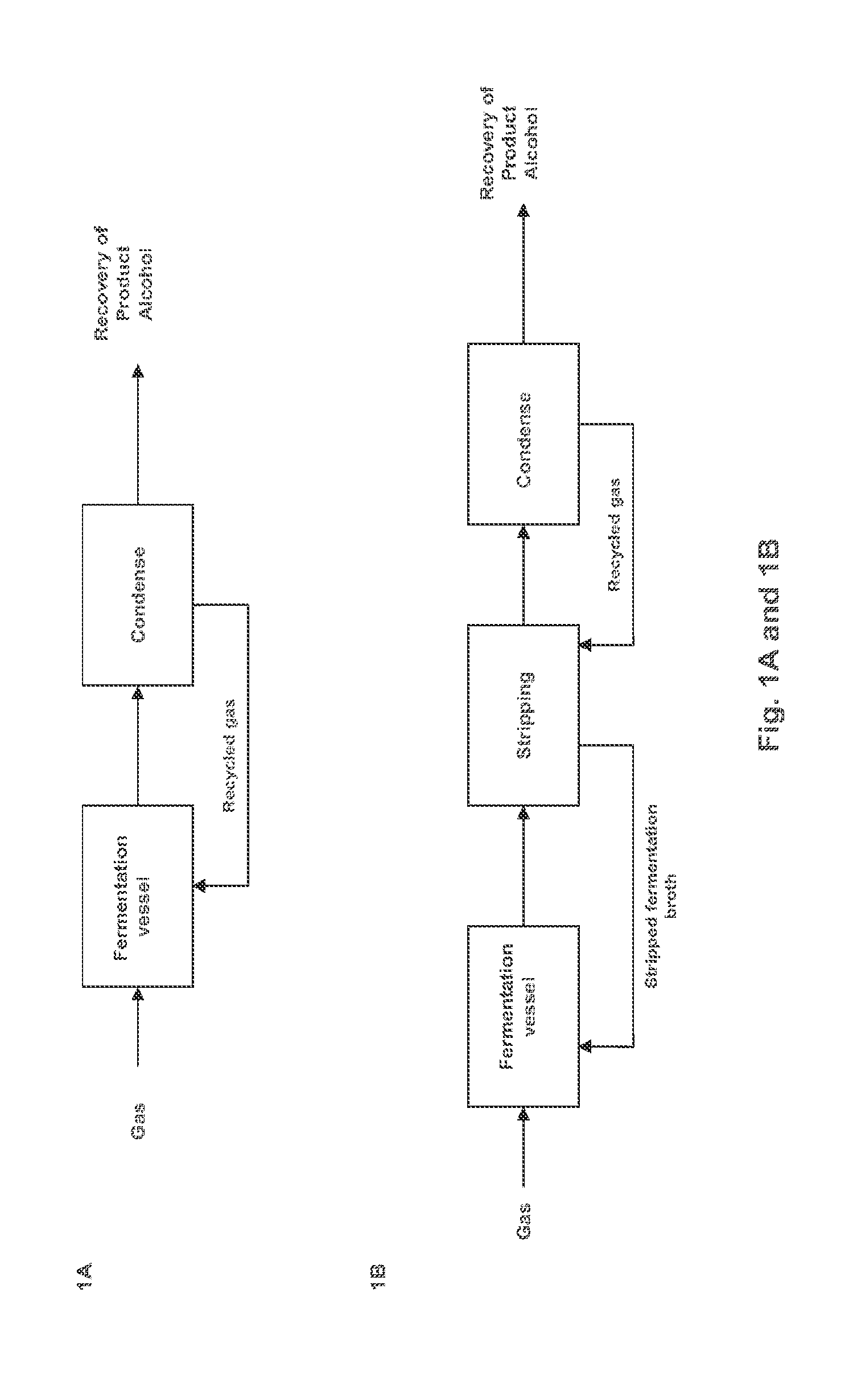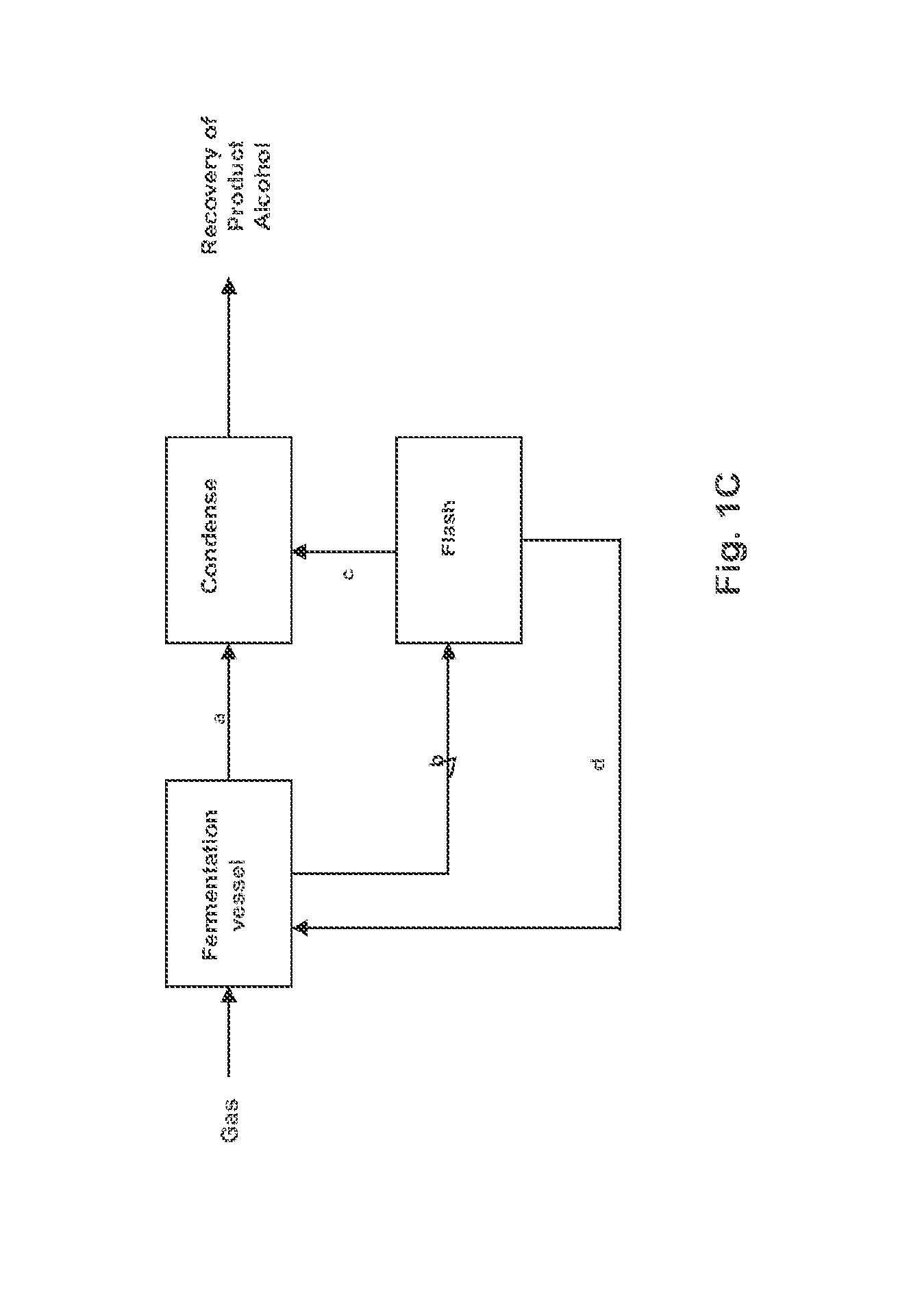Process to remove product alcohols from fermentation broth
a technology of product alcohol and fermentation broth, which is applied in the direction of fermentation solution distillation/rectification, vacuum distillation separation, separation process, etc., can solve the problems of reducing capital productivity, unable to guarantee cooling or practicality, and unable to provide dilute solutions that may be economically undesirable, so as to achieve the effect of minimizing shear damage to the microorganism
- Summary
- Abstract
- Description
- Claims
- Application Information
AI Technical Summary
Benefits of technology
Problems solved by technology
Method used
Image
Examples
example 1
Effect of Vacuum on Cell Viability
[0292]A Saccharomyces cerevisiae strain that was engineered to produce a product alcohol from a carbohydrate source was grown to 0.55-1.1 g / L dcw in seed flasks from a frozen culture. The culture was grown at 23-26° C. in an incubator rotating at 300 rpm. The frozen culture was previously stored at −80° C.
[0293]A series of comparative examples were conducted testing the effect of vacuum on the viability of the microorganism. Glucose utilization, optical density (OD), and cell count were used to determine the health of the microorganism.
[0294]Glucose concentrations were measured using a YSI Life Sciences 2700 Select™ Biochemistry Analyzer. Fermentation samples were centrifuged at 13,200 rpm for 2 minutes in a 1.7 mL microcentrifuge tube and the aqueous supernatant analyzed for glucose concentration.
[0295]Optical density was measured using a Thermo Electron Corporation Helios Alpha spectrophotometer. Measurements were typically made at a wavelength of...
example 2
Effect of Temperature on Cell Viability
[0300]A study was conducted to determine the effect of temperature on the viability of a Saccharomyces cerevisiae strain (NGCI-070). The construction of this Saccharomyces cerevisiae strain is described in U.S. Patent Application Publication No. 2011 / 0244536, which is incorporated in its entirety herein.
[0301]The primary culture was prepared by incubating seed stock of NGCI-070 in 10 mL media tubes at 30° C. for 32 hours in an incubator shaker (Innova 4200, New Brunswick Scientific, Edison, N.J.). Klett flasks containing 50 mL broth were then inoculated with the aliquots of primary culture, and the flasks were incubated at 30° C. in an incubator shaker. The cells were grown until the Klett readings reached about 220-250, and then 15 mL aliquots were added to 50 mL centrifuge tubes.
[0302]Broth (3.6 mL) was added to sterile test tubes and the test tubes were pre-heated in a 50° C. water bath for 10 minutes. Cells (0.4 mL) were added to the test t...
example 3
Effect of pH on Cell Viability
[0304]A study was conducted to determine the effect of pH on the viability of a yeast strain, Saccharomyces cerevisiae.
[0305]The primary culture was prepared by incubating seed stock of the yeast in 10 mL tubes containing YPS (Yeast extract-Peptone-Sucrose) media at 30° C. for 24 hours in an incubator shaker (Innova 4200, New Brunswick Scientific, Edison, N.J.). Klett flasks containing 100 mL broth were then inoculated with the aliquots of primary culture, and the flasks were incubated at 30° C. in an incubator shaker. The cells were grown until the Klett readings reached about 250.
[0306]Cells (25 mL) were removed from the Klett flask and added to a sterile beaker with a sterile stir bar. The pH was adjusted with 6 N NaOH until the desired pH was attained (e.g., about pH 11, 12, or 13). The cells were then maintained at this pH for various time points (e.g., 0, 10, 20, 30 minutes). Cells were plated onto YPS agar plates and were incubated for 2 days at...
PUM
| Property | Measurement | Unit |
|---|---|---|
| Pressure | aaaaa | aaaaa |
Abstract
Description
Claims
Application Information
 Login to view more
Login to view more - R&D Engineer
- R&D Manager
- IP Professional
- Industry Leading Data Capabilities
- Powerful AI technology
- Patent DNA Extraction
Browse by: Latest US Patents, China's latest patents, Technical Efficacy Thesaurus, Application Domain, Technology Topic.
© 2024 PatSnap. All rights reserved.Legal|Privacy policy|Modern Slavery Act Transparency Statement|Sitemap



